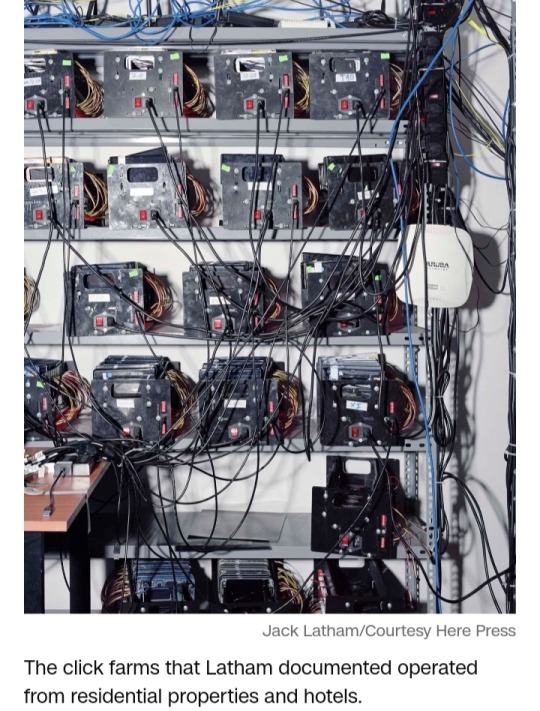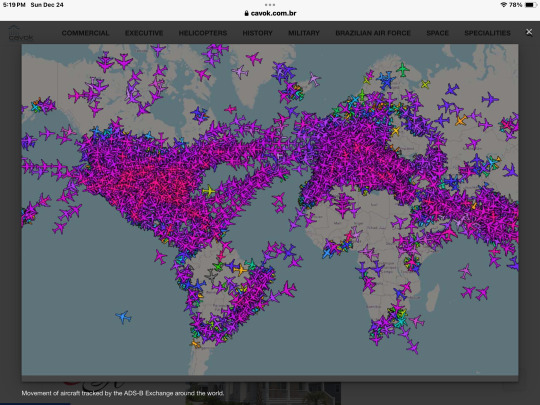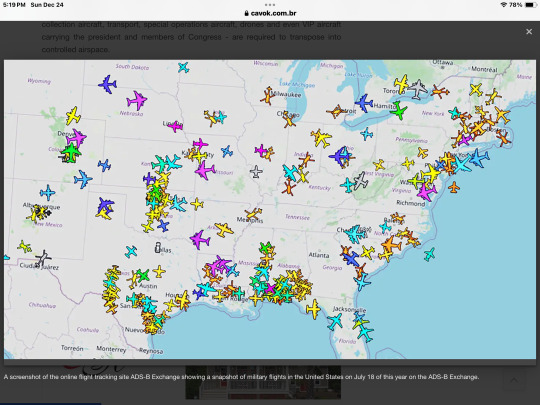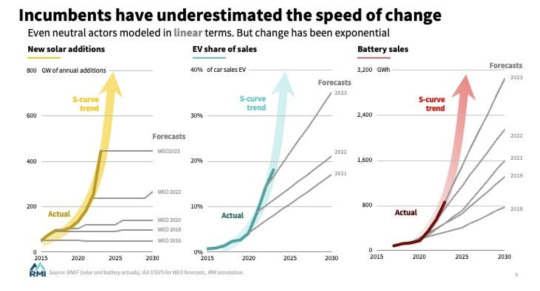#India China news online
Explore tagged Tumblr posts
Note
Here's the thing about this narrative that Palestinian resistance no matter what form is acceptable. Jewkilling cannot exist in a bubble. It cannot be politically neutral. 1000 years of European (and Arab) antisemitism culminating in genocide have ruined that. Sorry to Palestinian activists but that's just how it works. You can't murder a Jew without it being a tragedy, without it contributing to the continued global oppression of Jewish people.
And all that said, that's just if Hamas and others only targeted soldiers and police (or at least tried as best they could). The IRA didn't go out of its way to purposefully target noncombatants. Why? Probably because there isn't thousands of years of history of English people being seen as subhuman, there isn't thousands of years of anglophobic propaganda showing English people as twisted monsters preying on children and secretly undermining Irish society. The Irish national movement was not born because English refugees returned to their historical homeland and challenged the notion of Irish Supremacy. It was a pragmatic liberation movement. Resist military occupation, undermine military infrastructure designed to oppress the people. The descendants of English and Scottish settlers would even be allowed to stay if they had won. Imagine that.
These things are all tied up in each other. I'm against police brutality, I'm against the escalation and the militarization and the mistreatment of Arabs in Israel and in Judea & Samaria and Gaza and Golan and everywhere. But killing Jews can never be righteous. Sorry to anyone who feels that way but it can't. Antizionists NEED to understand that. Jews will always feel defensive and ready themselves for retaliation because of history, because of that context. Jews keep saying "prove to us a post zionist society where we all share the land won't be antisemitic" and their concerns are completely brushed off.
There's no empathy at all. A little girl can be stabbed to death and antizionists celebrate because she was a "settler," and that brave Palestinian man was defending his indigenous homeland, by targeting the weakest of his enemies. And since Israel has mandatory military service the antizionist can surmise that no Jews are Innocent. An Israeli Jew cannot be a noncombatant. They have to, otherwise the only other explanation for why Jewkilling is acceptable to them, or even feels good to them, is that they hate Jews. And as of right now, the optics are still against that. I have a sinking feeling the optics won't be against them much longer. I inherently don't trust a "liberation" movement that's all too eager to make murdering Jewish civilians praxis. I'm sick of the internet falling for this bullshit.
One of the best asks I have ever received. Thank you for sharing it and I agree with every word.
The entire progressive intersectional social-justice frame has failed Jews (or, alternately, has succeeded in excluding them), due to being intellectually colonized by a clearly fascist ideology of incessantly hating the Jew as a poisonous alien. Try to get an online activist to critically deconstruct the social assumptions they were raised with about Jews in their Muslim, Christian, or very slightly post-Christian society... it won't go well. Funny how Jews have lived in India and China for thousands of years yet you will look in vain for examples of bitter bloodthirsty kill-your-nextdoor-neighbor antisemitism in those societies. That's because the origin, the core, of Chinese and Indian societies was not "We're the people who are better than Jews."
From a review of Richard Landes' new book "Can the Whole World Be Wrong?":
[During the Second Intifada] Israelis were described at the time as the new Nazis. But the malice that was unleashed was even worse. As Landes writes, “It was mostly about being freed from a sense of obligation to the Jews, a chance to take up again the Jew-baiting so long denied Europeans by a politically correct post-Holocaust sobriety.” Landes quotes a poisonous comment made by a member of the House of Lords and reported in the Spectator, “Well, the Jews have been asking for it, and now, thank God, we can say what we think at last.” During that time, I was told something horrifyingly similar to my [=the reviewer's] face.
Your example of Irish nationalists not going out of their way to murder British children is a good one. The oft-reached comparisons between Palestine and South Africa are frivolous for many reasons as I have explained here before, and the ANC advocating and normalizing a vision of enduring racial diversity and equality is high on the list of reasons (made possible because black African identity is not predicated on a thousand-year history of hating and oppressing whites). The case of Rhodesia is even more instructive. Robert Mugabe - ROBERT MUGABE! - pleaded with the whites to stay, to live as equals, as brothers, and work together in building a better society in Zimbabwe. Ian Smith, last white PM of Rhodesia, agreed with him and stayed in Zimbabwe. If a so-called "liberation" movement is more openly dedicated to straight-up exterminating their enemies than Robert Mugabe ever was, maybe, just maybe, it shouldn't be described as "liberation" at all.
666 notes
·
View notes
Text

Chinese Porcelains Recovered From Centuries-Old Shipwreck Head to Auction
The porcelain vessels spent over 300 years at the bottom of the South China Sea.
Trawling the seabed near the south coast of Vietnam in 1989, a Vietnamese fisherman stumbled upon the remains of the wreck of a ship that was traveling from China to Jakarta when it sunk some three centuries before. Among the haul, which included everyday items like bamboo combs, tweezers, and dice, were a whopping 48,288 pieces of Qing dynasty porcelain. In Jakarta, traders of the globe-spanning Dutch East India Company had planned to transport the vessels to Holland. Some 28,000 were sold at a 1992 Christie’s auction in Amsterdam, their likely planned destination, for a total of $7.3 million.
Now, on October 10, a group of 20 of these vases, with all their historic resonance, is being offered in an online auction at Stair Galleries, in Hudson, New York, which handles traditional furniture and fine art. Ranging between five to eight inches-high and displaying intricate floral patterns typical of traditional Chinese pottery, the group bears a very modest high estimate of $1,200.

The “Vung Tau Cargo,” so called for the Vietnamese coastal city of Vũng Tàu, near which it was discovered, has had a notable history since it was raised from its watery grave by the state-owned Vietnam Salvage Corporation in a joint venture with none other than the famed Swedish treasure hunter Sverker Hallstrom.
As for the porcelain booty that wasn’t auctioned off at Christie’s Amsterdam in 1992, some went to Hallstrom’s personal collection, other pieces to the Vietnamese government. Others still fell into the hands of Alberto Pinto, a Parisian photographer and interior designer of Jewish-Moroccan origin, who acquired them at Sotheby’s in 1999. Pinto would then sell the 20 vessels now being offered at Stair at another Christie’s auction in 2006.
“Wear consistent with age and use,” the company’s online listing notes of the condition of the pieces, dryly enough in view of their history. It notes that five of the beakers have chipped rims, repairs or hairline cracks. Four of the vases and covers have some chips in the rims or feet, a few of them large. “Otherwise in good condition,” said the house.

“Some trademarks of ‘cargo porcelain’ have a somewhat cloudy appearance and in some cases encrustations of marine life,” said Lauren Anderson, director of exposition sales at Stair, adding that the cargo was “very fashionable with interior designers” like Pinto. Throughout his life but especially after becoming wealthy and successful, Pinto was known as a passionate collector of antique tableware, acquiring cutlery, porcelain, and linen from both Europe and Asia. (His collection also includes furniture, statues, and a sizable survey of Impressionist paintings, including Édouard Vuillard’s 1921 Lucien Guitry.)
By Tim Brinkhof.
#Chinese Porcelains Recovered From Centuries-Old Shipwreck Head to Auction#Vung Tau Cargo#Vũng Tàu#cargo porcelain#porcelain#shipwreck#ancient artifacts#archeology#archeolgst#history#history news#art#ancient art#art history#antiques#qing dynasty
25 notes
·
View notes
Text
Reflecting the instincts of a cold war veteran, Joe Biden’s strategy was familiar: contain the conflict. When the US president spoke in Warsaw in March 2022, a month after Russia’s full-scale invasion of Ukraine, he drew a red line at Vladimir Putin’s toes. “Don’t even think about moving on one single inch of Nato territory,” he warned.
The western allies would provide weapons and aid to Kyiv, impose sweeping economic and financial sanctions on Moscow and reduce the rouble to “rubble”, Biden vowed. Though not a Nato member, the US would help Ukraine win this symbolic battle for freedom and democracy. But it would not directly confront Russia unless Russia first attacked Nato.
Thirty months on, Biden’s containment strategy is failing miserably. Like an untreated cancer, Ukraine’s crisis metastasises uncontrollably. Far from being confined to the mud and ice of the Donbas, the war’s spreading, toxic fallout grows more globally destructive by the day. It contaminates and blights everything it touches. True, a “hot” war between Russia and Nato has been avoided so far. Yet Polish and Romanian territory has been affected by stray missiles and maritime attacks. The entire Black Sea region is embroiled, as is Belarus. Putin claims that the west is already waging war on Russia and threatens it with nuclear weapons. Propagandists vow to vaporise Poland.
The crisis has triggered US-Europe splits in Nato and within the EU. Rows flare over sending troops and long-range missiles to Ukraine, inviting Kyiv to join the alliance, and forging a separate European “defence identity”. France’s newly hawkish stance is cancelled out by German caution.
Neutral Sweden and Finland were panicked into joining Nato. The Baltic republics fear renewed Russian aggression. Hungary and Serbia appease the Kremlin. Italy wavers. No one feels safe.
The war is fuelling right-left political extremism as support surges for Putin’s paid-for populist apologists. In Moldova, last weekend’s EU membership referendum was grossly distorted by what its president, Maia Sandu, called a huge bribery operation by “criminal groups working together with foreign forces” – namely, Kremlin stooges.
Now Moscow is eyeing this weekend’s elections in Georgia where it covertly conspires to ensure pro-western parties lose. Such hybrid warfare – subversion, disinformation, influence operations, cyber-attacks, scams, online trolling – has mushroomed worldwide since 2022, as authoritarian regimes follow Russia’s lead.
Failure to contain the war is encouraging seismic geopolitical shifts, most notably the China-Russia “no-limits” partnership. China’s president, Xi Jinping, gets cheap oil; ostracised Putin gets sanctions-busting dual-use tech plus diplomatic backing. But it’s so much more than that. At last week’s Brics summit – hosted by Putin – Russia, China, India, Brazil and South Africa were joined by Iran, North Korea, Syria, Venezuela and, alarmingly, Nato member Turkey (among many others). Putin envisages a global anti-western alliance, Xi a post-American, China-led 21st-century new world order.
These are no idle dreams. For many second-tier countries, the west’s condemnation of Russian aggression in Ukraine and its refusal to condemn, and active facilitation of, Israeli aggression in Palestine represents an intolerable double standard. Some are switching sides.
What better illustrates the unbounded nature of this inexorably expanding conflict than the startling news that North Korea, in a breath-taking counterpoint to US and UK military intervention in the Korean war nearly 75 years ago, is deploying troops to the Ukraine theatre?
And how appalling that Donald Trump can cynically use Ukraine’s “forever war” to persuade US voters that Democrats like Kamala Harris cannot control a chaotic world, Nato is a con-trick run by freeloading Europeans and the UN is useless.
The war diverts attention from other grave conflicts, from Sudan to Myanmar. Attacks on Kyiv’s grain exports have caused food shortages and price spikes hurting poorer countries. It disrupts cooperative action on climate; indeed, it has greatly increased greenhouse gas emissions While Putin, indicted for war crimes, goes unpunished, respect for international law and the UN charter plummets. Impunity flourishes.
The war’s enormous economic costs are escalating. The World Bank estimates that the first two years caused $152bn (£117bn) of direct damage in Ukraine. The UN predicts $486bn is needed for recovery and reconstruction. Each day, the totals rise. Meanwhile, Russia constructs shadowy international networks – an officially approved black market – to circumvent sanctions and undermine dollar hegemony.
The cost in lives is heartbreaking. Conservative UN estimates suggest that about 10,000 civilians have been killed and twice that number injured. More than 30,000 Ukrainian soldiers may have died. Russian military casualties are an estimated 115,000 killed and 500,000 wounded. The cost to Russian society of intensifying authoritarianism, corruption and suppression of dissent and free media is immeasurable.
Ukraine has not lost the war, which is a remarkable feat in itself. But it is not winning, either. Western support is weakening, despite the rhetoric; Russian forces advance. President Volodymyr Zelenskyy’s “victory plan” has few takers. Winter is coming.
How much of this could have been prevented? Some developments, such as the China-Russia axis and rising rightwing populism, were happening anyway. The war simply accelerated them. But a lot of the wider damage was avoidable, wholly or in part.
In Warsaw, Biden was candid, almost boastful: back in January 2022, US intelligence knew that the invasion was imminent. He said he had repeatedly warned Putin it would be a big mistake. Yet, given his passionate belief that Ukraine’s fight for democracy and freedom has vital universal significance, surely what Biden should have done is told Russia’s dictator bluntly: “Forget it. Don’t invade. Or else you will find yourself fighting a better-armed, more powerful Nato.”
It’s called deterrence. It’s what Nato is for. Containment was never enough. Putin might still not have listened. But coward that he is, he probably would have – and saved everyone a world of pain.
13 notes
·
View notes
Text
hello children
I am dubiously alive! I am potentially maybe a little bit returning to tumblr, because I have no fandom/language friends irl and it's actually quite exhausting!
what have I been doing?
interpreted in a martial arts academy in china. it did not end well :( and I spent the next six months processing, doing no chinese and generally feeling despondent
did some teaching in thailand with monks
went to india and saw my friend, got three yoga teaching qualifications, my partner flew over and we went to the himalayas together for a month
wrote 250k on my novel (too. long)
moved back to the uk
now I'm living with my partner very happily and I have started a new job teaching english! in my free time I work on my Book!
I have no idea who is still around of the 2020 quarantine langblr community, but if you are, say hi! I may pop in and out.
(re. sustainability and being online as someone who is fairly addicted to the internet - I am asking my partner to help by setting a daily timer, the password of which I do not know. I hope that will help me get the special interest buzz which I've been sorely craving, as well as enable me to, you know, have a life)
#I have forgotten entirely my tagging system. well#meichenxi...is alive??#and sort of vaguely studying chinese again?#I've found a good system which I'll talk more about later. it won't last#as nothing ever does#but you know what. it'll last for long enough#wow. tumblr lets you edit tags now???#I feel like I've been gnawing savagely at a chair leg and someone has gently suggested food
40 notes
·
View notes
Text
I've gotten quite a few new followers recently, so I think one of my posts broke containment...
Lemme just.
Take a few proverbial shots in the air:
Trans rights are human rights.
Transmen are men, but they exist within the transphobic clutches of the patriarchy and pretending they have "male privilege" instead of being punished for failing to conform to toxic masculinity makes you sound like someone who's never been in touch with the community IRL.
Trans women are women! They're not inherently predatory and if such a thing as "male socialization" exists, it does not confer them power, but rather punishes them for failing to perform masculinity.
Nonbinary, genderqueer and genderfluid are distinct, valid and separate identities that often overlap but which do not constitute a "third gender" around which to build another stupid gender dichotomy.
Queer is not a slur, it's an umbrella term. If you do not wish to belong to the queer community that is your prerogative, but you do not get to tell MY community that we shouldn't exist because our language makes you uncomfortable.
Acephobia is fucking pathetic and you're a pathetic dork for committing it. Aces, Aros and Demis belong in the Queer community and their struggles are no less real because you want to be a dick about it.
I'm not American. The fact I'm forced to know and keep up with American politics while the average American pretends my country is either a tourist attraction or a humanitarian crisis zone, is in fact a sign of American colonialism and I'm not going to sugar coat it if it makes you uncomfortable to be reminded of it.
Mexican Americans are not Mexican. They're American, with Mexican ancestry. If you center their voices over my own people's when speaking about my own country, I will fucking fist-fight you.
Race is not a game of rock-paper-scissors and intersectionality is not about keeping score about whose opinions are deemed blanket correct without a second thought.
People's existence is not in itself an act of activism, so for the love of fuck, stop being weird to strangers who are just vibing and calling them "brave" and "inspirational" just because they allow themselves to exist in public. You sound like a tool.
Israel is committing a genocide. It is not antisemitic to point out that Israel is in fact doing a genocide. The solution to Israel committing a genocide is not to be antisemitic.
There are in fact several genocides currently on going: Sudan, Ukraine, Nigeria, Afghanistan, Syria, North Korea, Myanmar, India, China, Ethiopia and Congo, just to name a few. It is not racist to point it out. But it is racist to reduce any of them to merely a snarky remark in an attempt to prove how not racist you are. It is extra racist to say "other genocides" without acknowledging them specifically.
There's still hasn't been a situation where siding with the people committing the genocide turned out to be the right choice.
There's no such thing as a funny genocide joke.
No, not even that one. It's a genocide, it is inherently unfunny and if you consider that a challenge, you have lost the plot.
Primarily, though, this is a fandom blog.
Fandom is not activism and if you think it is, you owe me fucking reparations for the stupidity. If you argue about the well-being of fictional characters at the cost of real people, we're gonna have problems.
Neither you nor I are obligated to make every part of our presence online about the human rights violation of the hour. It's okay if you curate a space that exists only to make you feel better. This is my feel better corner. I will talk about things that are important to me, but that doesn't mean I'm obligated to talk about all the things that are important to me.
I reblog art I like, tumblr posts I find funny, the occasional rant and the fic I write in my spare time.
If you like my shit? Cool. Consider throwing a tip my way if you like.
But I'm not a news outlet, and unless I'm quoting extensively and providing and citing sources, I'm talking out of my ass because it's my own corner of the internet and that's what I do here.
I've been on the internet since 1998, I promise you whatever has you in a frothing rage is neither new nor unnuanced. Please assess if it's worth spending your limited time on this earth getting angry at strangers on the internet.
It sure as fuck isn't worth mine.
39 notes
·
View notes
Text
Anon: but... but... the Gaza attack was due to 75 years of colonization......!
Me: Well gee, I guess the Armenian genocide ought to be considered in the context of…the previous 1500 years of Armenian Christianity’s existence, and 450 years of non-Muslim Armenians living peacefully under Ottoman rule and paying a special tax in order to do so. And while we're on that subject, I guess the Omagh bombing, which killed 29 people including non-Protestants and non-English people, should be considered in the context of 800 years of British political and military involvement in Ireland. And I suppose the Cambodian genocide has to be considered in the context of centuries, if not millennia, of class warfare which preceded it. Or something.
Fucking. Bull. Shit.
And let's not forget an important fact, immediately after the U.N created the partition, Jordan annexed Palestine (Jordanians and Palestinians are the same people living in different locations). So Palestine never actually technically existed. It was only after the Jordanians got their asses kicked twice in wars they started with Israel that Jordan gave up and renounced the "Palestinians" citizenship. The terrorist Yasir Arafat, in a remarkably successful P.R. move then decided to create this new myth of a Palestinian People with Israel as its homeland.
This is the translated meme that gets passed around in the Arab nations mocking the gullible liberal Westerners like you for falling for Arafat lies.

Now Anon, try to imagine Mexicans get uppity over losing territory to United States of America and begin a campaign of terror against the USA. Mexico launches missiles across the border wall into San Diego, Tuscon, San Antonio and more. They dig tunnels under the border wall and generally make themselves a pain in the ass.
But this time they launched a full scale incursion, took over several border towns, massacred most of the population and took the rest as hostages back into Mexico. They post videos online of raped and tortured hostages, who only barely cling to life. Mexicans now say they will start killing hostages, unless USA abandons New Mexico, Arizona, Texas, California and Nevada and calls on the entire world to join in their crusade.
How do you think the USA would respond to that? Hmmmm?
You can switch countries if you want. Russia took land from Finland, China from Tibet, India and Pakistan have their antics, there’s the perpetual issue of Western Sahara and so on. Can you think of one example, only one example, where the response would be more restrained, if a militarily weaker force did that to a larger, stronger neighbor in such a manner? All it takes is one.
29 notes
·
View notes
Text
Anyhow, what I'm getting at with that post is that the OP is basically just looking for a reaction. They're having fun.
Capital equipment is always breaking down. Factories rust. They can get broken into, or equipment can be brought down by metal fatigue or erosion. A factory could be destroyed by a landslide or tornado.
Capital equipment becomes misaligned with the environment. Consumer preferences change. Resource deposits are exhausted. New technology is invented.
The ability to create new capital equipment that's aligned with the environment beats the ability to maintain capital equipment. The ability to maintain capital equipment beats the ability to merely seize capital equipment.
Material resources may be bottlenecks to capital creation, but material resources in themselves are not capital creation. If the developed countries were merely good at seizing material resources, they would not be this rich. The most important capital technology of the 21st century, the microchip, is made out of sand.
Additionally, the developed "Western" countries aren't even all that tough on enforcement - they allowed China to build up a huge amount of industrial capacity. Vietnam is currently building out industrial capacity. People have been complaining of outsourcing of white collar jobs to India (such as software development or call center work) for decades, now. Because profit is typically only a small portion of a firm's revenue, demand is important for building up capacity, and huge amounts of demand were funneled to non-white and even nominally Communist countries.
"Unlimited genocide of the first world" isn't based on any sort of theory of capital formation, and it isn't based on a historical understanding that can separate out why conquests by e.g. England somehow gained more traction than all the thousands of years of other conquests all over the world, and it isn't motivated by a desire to enrich people of developing countries.
It's just supposed to be edgy and make people mad online.
Usually it's best to block this kind of person and move on, because people that love drama like this will behave in ways that are unhinged or irrational compared to normal social media users or sincere discourse types.
10 notes
·
View notes
Text

(CNN) — Jack Latham was on a mission to photograph farms in Vietnam — not the country’s sprawling plantations or rice terraces but its “click farms.”
Last year, the British photographer spent a month in the capital Hanoi documenting some of the shadowy enterprises that help clients artificially boost online traffic and social media engagement in the hope of manipulating algorithms and user perceptions.
The resulting images, which feature in his new book “Beggar’s Honey,” provide rare insight into the workshops that hire low-paid workers to cultivate likes, comments and shares for businesses and individuals globally.
“When most people are on social media, they want nothing but attention — they’re begging for it,” Latham said in a phone interview, explaining his book’s title.
“With social media, our attention is a product for advertisers and marketers.”

In the 2000s, the growing popularity of social media sites — including Facebook and Twitter, now called X — created a new market for well-curated digital profiles, with companies and brands vying to maximize visibility and influence.
Though it is unclear when click farms began proliferating, tech experts warned about “virtual gang masters” operating them from low-income countries as early as 2007.
In the following decades, click farms exploded in number — particularly in Asia, where they can be found across India, Bangladesh, Indonesia, the Philippines, and beyond.
Regulations have often failed to keep pace: While some countries, like China, have attempted to crack down on operations (the China Advertising Association banned the use of click farms for commercial gain in 2020), they continue to flourish around the continent, especially in places where low labor and electricity costs make it affordable to power hundreds of devices simultaneously.
‘Like Silicon Valley startups’
Latham’s project took him to five click farms in Vietnam.
(The click farmers he hoped to photograph in Hong Kong “got cold feet,” he said, and pandemic-related travel restrictions dashed his plans to document the practice in mainland China).
On the outskirts of Hanoi, Latham visited workshops operating from residential properties and hotels.
Some had a traditional setup with hundreds of manually operated phones, while others used a newer, compact method called “box farming” — a phrase used by the click farmers Latham visited — where several phones, without screens and batteries, are wired together and linked to a computer interface.

Latham said one of the click farms he visited was a family-run business, though the others appeared more like a tech companies.
Most workers were in their 20s and 30s, he added.
“They all looked like Silicon Valley startups,” he said. “There was a tremendous amount of hardware … whole walls of phones.”
Some of Latham’s photos depict — albeit anonymously — workers tasked with harvesting clicks.
In one image, a man is seen stationed amid a sea of gadgets in what appears to be a lonely and monotonous task.
“It only takes one person to control large amounts of phones,” Latham said. “One person can very quickly (do the work of) 10,000. It’s both solitary and crowded.”
At the farms Lathan visited, individuals were usually in charge of a particular social media platforms.
For instance, one “farmer” would be responsible for mass posting and commenting on Facebook accounts, or setting up YouTube platforms where they post and watch videos on loop.
The photographer added that TikTok is now the most popular platform at the click farms he visited.

The click farmers Latham spoke to mostly advertised their services online for less than one cent per click, view or interaction.
And despite the fraudulent nature of their tasks, they seemed to treat it like just another job, the photographer said.
‘There was an understanding they were just providing a service,” he added. “There wasn’t a shadiness. What they’re offering is shortcuts.”
Deceptive perception
Across its 134 pages, “Beggar’s Honey” includes a collection of abstract photographs — some seductive, others contemplative — depicting videos that appeared on Latham’s TikTok feed.
He included them in the book to represent the kind of content he saw being boosted by click farms.
But many of his photos focus on the hardware used to manipulate social media —webs of wires, phones and computers.
“A lot of my work is about conspiracies,” Latham said. ” Trying to ‘document the machines used to spread disinformation’ is the tagline of the project. The bigger picture is often the thing we don’t see.”

Click farms around the world are also used to amplify political messages and spread disinformation during elections.
In 2016, Cambodia’s then-prime minister Hun Sen was accused of buying Facebook friends and likes, which according to the BBC he denied, while shadowy operations in North Macedonia were found to have spread pro-Donald Trump posts and articles during that year’s US presidential election.
While researching, Latham said he found that algorithms — a topic of his previous book, “Latent Bloom” — often recommended videos that he said got increasingly “extreme” with each click.
“If you only digest a diet of that, it’s a matter of time you become diabetically conspiratorial,” he said.
“The spreading of disinformation is the worst thing. It happens in your pocket, not newspapers, and it’s terrifying that it’s tailored to your kind of neurosis.”
Hoping to raise awareness of the phenomenon and its dangers, Latham is planning to exhibit his own home version of a click farm — a small box with several phones attached to a computer interface — at the 2024 Images Vevey Festival in Switzerland.
He bought the gadget in Vietnam for the equivalent of about $1,000 and has occasionally experimented with it on his social media accounts.
On Instagram, Latham’s photos usually attract anywhere from a few dozen to couple hundred likes.
But when he deployed his personal click farm to announce his latest book, the post generated more than 6,600 likes.
The photographer wants people to realize that there’s more to what they see on social media — and that metrics aren’t a measurement of authenticity.
“When people are better equipped with knowledge of how things work, they can make more informed decisions,” he said.

“Beggar’s Honey,” co-published by Here Press and Images Vevey, is available now.
#Jack Latham#click farms#box farms#Hanoi#Vietnam#Beggar’s Honey#box farming#social media#algorithms#user perception#trolls#PR#marketing#advertising#likes#comments#shares#digital profiles#virtual gang masters#bots#spam#China Advertising Association#click farmers#mass post#disinformation#misinformation#fake news#metrics
13 notes
·
View notes
Text

How to identify and track military aircraft in online applications
It is surprisingly easy to track what is flying above you, but there are limits - you will still see only what the military wants you to see.
Fernando Valduga By Fernando Valduga 12/24/2023 - 14:40 in Military
The system, known as ADS-B, allows you to quickly search for what is flying in your vicinity, or even on the other side of the world.
In the past, before the 2000s, people looked at the sky and saw the trail of condensation created by commercial and military jets at high altitudes and wondered what would be the aircraft that passed over our heads, where it was going, where it came from. Today, thanks to a worldwide transponder system, you can track even U.S. military aircraft.
About a decade later, it was already possible to follow commercial aircraft, knowing which airline, flight level, speed and route taken by the flights, being able to accurately follow the arrival of a plane at the airport.
Currently, equipped with a smartphone and with a particular app or website, we can find all this and much more.

Civil aviation authorities around the world began to implement Automatic Transmission of Dependent Surveillance (ADS-B) in the early years. The ADS-B is an aircraft-mounted transponder system that transmits a variety of information in real time, including the location, speed, direction of the aircraft and a unique transponder code for each aircraft. This information, plotted on a map, gives pilots and ground controllers the ability to quickly get a sense of the local airspace (or the airspace of most places on Earth).
Transponder signals can also be captured by cheap terrestrial receivers that amateurs, aviation enthusiasts and others can build for less than $100 using widely available hardware and software, some of which can be obtained on flight tracking sites.

Movement of aircraft tracked by the ADS-B Exchange around the world.
As of 2021, ADS-B transponders are mandatory in the USA, Europe, Australia, Colombia, India, Indonesia, Malaysia, New Zealand, Papua New Guinea, South Africa, Taiwan and Vietnam, and the system is being implemented in China, Canada and Saudi Arabia.
In the United States, almost every type of aircraft - from commercial aircraft and small private aircraft to military fighters, helicopters, bombers, tankers, information-collection aircraft, transport, special operations aircraft, drones and even VIP aircraft carrying the president and members of Congress - are required to transpose into controlled airspace.

A screenshot of the online flight tracking site ADS-B Exchange showing a snapshot of military flights in the United States on July 18 of this year on the ADS-B Exchange.
The information is not only available to the aviation community. The ADS-B Exchange website gathers aircraft tracking data and makes it available in real time, allowing anyone to track air traffic anywhere the system is working.
Unlike FlightRadar24.com or FlightAware.com - which rely on flight tracking data streams provided by the FAA and other international aviation authorities or obtained from Aireon's global ADS-B air traffic surveillance and tracking network, as well as ground-based ADS-B receivers - ADSBExchange.com relies on thousands of independently owned ground-based ADS-B receivers and multilayer devices, or MLAT.
youtube
MLAT receivers in groups of three or four in a small geographical area use triangulation to track aircraft. In other words, if an aircraft is not using ADS-B for transponder as military aircraft sometimes do, MLAT receivers can still capture their S-Mode transponder signals and establish a position and tracking for an aircraft, as well as altitude and speed data.
The network of receivers of the ADSBExchange.com website includes 10,000 MLAT devices worldwide. As it does not collect flight tracking data from government or commercial sources, it may offer "unfiltered" flight tracking.
ADS-B Exchange merges ADS-B data with other publicly known data on military and civilian aircraft around the world. Individual aircraft are plotted on OpenStreetMap - a free geographical database of the world - represented by color-coded icons according to altitude. The icons range from individual autostos and Cessna 182 to four-engine Boeing 747 and Airbus A380 civil aircraft. Military icons include U-2, KC-135 Stratotankers, C-17 Globemaster III, C-5M Super Galaxy, V-22 Ospreys and so on, although fighters are often represented by a more generic icon model of swept wing and stuffy nose.

A click on the icon includes spatial information, including ground speed, altitude and location, ADS-B signal strength and other data. It also includes the registration of the aircraft, the country of registration and adds a photograph or thumbnail of the aircraft when possible.
All this means that, with the click of a button, you can instantly find out what is flying near you.
Although aircraft tracking has long been a niche hobby among aviation enthusiasts who like to catalog the comings and goings of aircraft, the public availability of transponder data in mid-air also offers journalists, researchers and other observers an effective means of tracking the movements and activities of the planes of the richest and most powerful in the world. The aggregation and analysis of public flight data shed light on the CIA's torture flights, the movements of the Russian oligarchs, and Google's friendly relationship with NASA.
Flights from ISR platforms tracked in the Ukraine region for a period of one month, at the end of last year.
More recently, these tracking techniques have gained international attention after attracting the wrath of Elon Musk, the richest man in the world. After buying social media giant Twitter, Musk banned an account that shared the movements of his private jet.
Despite repeated promises to protect freedom of expression - and a specific promise not to ban the @ElonJet account - on the platform, Musk censored anyone who shared the whereabouts of his plane, claiming that the data obtained entirely legally and totally public was equivalent to "murder coordinates".
A Global Hawk flown remotely with the indicater FORTE12 was the last aircraft tracked over Ukraine before the invasion of Russian forces and the closure of the country's airspace to civilian air traffic, according to the global flight tracking service Flightradar24.
Soon after the Russian invasion of Ukraine, a US Global Hawk, with the indication FORTE12, was followed almost daily by thousands of people on the Flighradar24 platform.
Publicly available flight tracking data is a growing problem for the U.S. military, a senior Pentagon official said recently.
Sites such as ADSBExchange.com, FlightRadar24.com and FlightAware.com aggregate flight data in the United States and abroad using a combination of commercial and citizen-owned sensors that capture the movements of commercial, civil and military aircraft in real time, 24 hours a day.
"The Department of Defense considers open source flight tracking and data aggregation on our aircraft a direct threat to our ability to conduct military air operations around the world," the U.S. Air Force said.

An F-35 fighter was tracked in the Flightradar 24 app earlier this year, during a flight near Phoenix, Arizona.
Aggregated by websites and retransmitted on social media accounts, the data can be a free source of intelligence for nation-states, terrorist groups or individuals, revealing everything from operational movements of aircraft, aviation units and troops to training standards, development test flights and the movements of government officials, experts said.
This image shows a Beechcraft King Air configured for intelligence, surveillance and reconnaissance missions in the military aviation field of Baledogle, Somalia, in 2021. The U.S. civil registration code on the side was not assigned to any specific aircraft at the time and its exact operator remains unknown. However, this is very much in line with the types of aircraft that JSOC allegedly operates clandestinely and that would be interested in hiding the activities through the proposed aircraft flight profile management database tool.
Therefore, military aircraft routinely transmit their ADS-B data, but have the option to turn it off when necessary. The Pentagon is well aware that aviation enthusiasts - and potential opponents - monitor ADS-B data and that aircraft turn off transponders when they do not want anyone to observe them. Often when following the aircraft they simply disappear abruptly from the map.
The U.S. military is also known to use fake hexadecimal codes, which identify a transponder as belonging to a specific aircraft, to help mask certain sensitive flights. For example, the U.S. Air Force VC-25A Air Force One jet that transported President Donald Trump to Afghanistan in 2019 electronically disguised itself for a time as a KC-10 Extender tanker in this way.
As a particularly notable and relevant example of tracking high-profile U.S. military flights, the U.S. Air Force C-40 Clipper aircraft that transported Nancy Pelosi, then a representative of the Democratic Party in California and mayor, to Taiwan last year was visible online, despite concerns that the Chinese military might try to forcibly prevent the flight from reaching the island or harassing it otherwise.
This flight, which used the SPAR19 indicative, was one of the most tracked of all time in terms of total simultaneous users monitoring it on the popular website FlightRadar24, and ended up taking down the app for a period of time.
The Ghostrider trail on the night between November 20 and 21, 2023, on Radarbox.com.
In mid-November, something new happened: a U.S. aircraft involved in combat apparently left its ADS-B on, and did so intentionally. An AC-130J Ghostrider attack aircraft carried out an airstrike against a target that had launched a missile attack against U.S. forces at Al Assad Air Base in Iraq. The AC-130 gunship has a variety of weapons, including 30mm and 105mm cannons, and precisely guided bombs and missiles, and usually flies in lazy circles above its target, pouring firepower on the targets below. In Al Assad's retaliatory air attack, according to The Aviationist website, the Ghostrider involved apparently kept his transponder on all the time, drawing large circles on the ADS-B map and it was possible to be seen on the Radar Box website.
In Brazil, it is possible to track several military aircraft in aircraft tracking applications, including the most widespread Flightradar24. Next, you can see the KC-390, C-130 Hercules transport aircraft or T-27 Tucano coaches in flight near the Air Force Academy. The FAB has hidden data from the presidential aircraft A319 (VC-1) and E190 (VC-2) on these sites.
FAB T-27 Tucano aircraft are often seen flying near Pirassununga, AFA headquarters.
More recently, it was possible to follow the flights of the Brazilian Air Force that went to seek refugees and Brazilian citizens who were and Israel and the Gaza Strip. The KC-30 and KC-390 aircraft could be tracked in real time on the tracking platforms.
If you are a fan of military aircraft or just like to know what is happening when you hear the noise of aircraft engines, ADS-B is a free and reliable tool that you should use to track and identify planes. Observing fighters, spy planes and transport coming and going can help you get to know your armed forces. Just keep in mind that, at least when it comes to military flights, you will only see what the military wants you to see.
BONUS
From Christmas Eve, the flight tracking site Flightradar24 will be keeping an eye on Santa Claus and his reindeer Rudolph, Dasher, Dancer, Prancer, Vixen, Comet, Cupid, Donner and Blitzen as they accelerate around the world.
Initially tracking Santa Claus was a challenge, but thanks to an ADS-B transponder installed a few years ago and the reindeer horns functioning as an additional antenna, Flightradar24 uses a mixture of terrestrial and satellite ADS-B coverage to track Santa Claus during his busiest night of the year.
To follow the good old man, go here.
Tags: Military AviationtrackingTechnology
Sharing
tweet
Fernando Valduga
Fernando Valduga
Aviation photographer and pilot since 1992, he has participated in several events and air operations, such as Cruzex, AirVenture, Dayton Airshow and FIDAE. He has works published in specialized aviation magazines in Brazil and abroad. He uses Canon equipment during his photographic work in the world of aviation.
Related news
MILITARY
With the V-22 grounded, the Navy's venerable C-2 are coming back into action
23/12/2023 - 21:52
The first A330 MRTT of the Spanish Air Force approaching Getafe. (Photo: Juan Manuel Gibaja / Airliners.net)
MILITARY
The first Airbus A330 MRTT of the Spanish Air Force fly
23/12/2023 - 21:21
MILITARY
B-1 bombers fly in second trilateral exercise with Japan and South Korea
23/12/2023 - 17:14
MILITARY
Switzerland postpones final deliveries of Hermes 900 unmanned aerial vehicles to 2026
23/12/2023 - 16:05
MILITARY
IMAGES: RAF C-17 transports a Merlin helicopter back home
23/12/2023 - 12:08
Russian Air Force Il-18V aircraft that was intercepted by the Polish F-16s. (Photo: Polish Air Force)
INTERCEPTIONS
Polish F-16 jets are fired on a mission in the Baltic to intercept Russian Il-18V
23/12/2023 - 10:54
13 notes
·
View notes
Text
What You Want is an S Curve

Excerpt from Bill McKibben's Substack, "The Crucial Years."
Regular readers of this column know that I think we’re engaged in the most desperate race in human history—a race between a rapidly unraveling climate, and a rapid buildout of renewable energy. The outcome of that race will determine just how many people die, how many cities drown, how many species survive. Pretty much everything else—efforts to restore corals, say, or worries about how exactly we’ll power long-haul aircraft—is noise at the margins; the decisive question is how those two curves, of destruction and construction, will cross. Oh, and the relevant time frame is the next half-decade, the last five or six “crucial years.”
So even amidst all the desperate news from climate science, I have some legitimately good numbers to update you on this morning. They come from the veteran energy analyst Kingsmill Bond and colleagues at the Rocky Mountain Institute, and they demonstrate that the world has moved on to the steep part of the S curve, which will sweep us from minimal reliance on renewable energy to—we must hope and pray— minimal dependence on fossil fuel. The angle of that curve may prove to be the most significant geometry of our time on earth, competing only with the slope of the Keeling Curve which documents the growing accumulation of co2 in the atmosphere above Mauna Loa.
It seems pretty clear, according to Bond’s team, that last year or this we will hit peak fossil fuel demand on this planet—the advent of cheap solar and wind and batteries, combined with rapidly developing technologies like heat pumps and EVs, has finally caught up with the surging human demand for energy even as more Asian economies enter periods of rapid growth: the question is whether we’ll plateau out at current levels of fossil fuel use for a decade or more, or whether we can make fossil fuel use decline enough to begin to matter to the atmosphere.
And the numbers in the new report give at least some reason for hope: sun and wind are now growing faster than any other energy sources in history, and they are coming online faster that anyone had predicted, even in the last few years. In the last decade, “solar generation has grown 12 times, battery storage by 180 times, and EV sales by 100 times.” This charge has been led by China, where “solar generation up 37 times and EV sales up 700 time.” and which as a result is “poised to be the first major electrostate.” Europe, and indeed the whole OECD group, are now seeing rapid growth too, and the best news is that there are increasing signs that countries like India and Vietnam, where growth in demand will be fastest over the rest of the decade, are figuring out how to electrify their economies. Fossil fuel for generating electricity has peaked in Thailand, South Africa, and in all of Latin America.
Solar power in particular is about to become the most common way to produce electricity on this planet, and batteries will this year pass pumped-hydro as the biggest source of energy storage; the supply chain seems to be in place to continue this kind of hectic growth, as there are enough factories under construction to produce the stuff we need, and investment capital is increasingly underwriting cleantech (though a treacherously large supply of money continues to flow to fossil fuels). Pick your metric—the number of cleantech patents, the energy density of batteries, the size of wind turbine rotors—and we’re seeing rapid and continuing progress; the price of solar power is expected to drop by half again in the course of the decade, reinforcing all these trends. The adoption curves for cleantech look like the adoption curves for color tv, or cellphones—that is to say, from nothing to ubiquitous in a matter of years.
A big reason for the ongoing change—and for ongoing optimism—is the simple efficiency of the technologies now ascendant.
A second report from Bond’s Rocky Mountain Institute, this one published last week, focused on these numbers, and they’re equally astounding. By their calculations, we waste more than half of the energy we use:
Out of the 606 EJ (an exajoule is roughly the annual energy consumption of New York City) of primary energy that entered the global energy system in 2019, some 33% (196 EJ) was lost on the supply side due to energy production and transportation losses before it ever reached a consumer. Another 30% (183 EJ) was lost on the demand side turning final energy into useful energy. That means that of the 606 EJ we put into our energy system per annum, only 227 EJ ended up providing useful energy, like heating a home or moving a truck. That is only 37% efficient overall.
We’ve invested mostly in increasing the volume of energy we use, not its efficiency—because that was what made big money for Big Oil. But cleantech is inherently more efficient: when you burn fossil fuel to make power, you lose two-thirds of the power to heat, which simply doesn’t happen with wind and sun. An EV translates 80-90% of the power it uses into propulsion, compared with well less than half for a car that runs on gas. A gas boiler is 85 percent efficient, which isn’t bad—but a heat pump is 300% efficient, because its main “fuel source” is the ambient heat of the atmosphere, which it translates into heating and cooling for your home. That means that the higher upfront costs of these technologies quickly translate into serious savings. And these kind of numbers bend curves fast
5 notes
·
View notes
Text
By Eva Seiwert
The first BRICS+ Summit after the group’s enlargement in January 2024 allowed Russian host Vladimir Putin to style himself as a non-isolated world leader, but the lack of substantial developments on core topics highlights the disparities among its nine member states’ ambitions for the organization, rather than their unity. While BRICS must be taken seriously as a growing economic organization comprising numerous Global South countries, it would be wrong to interpret it as one pole of a two-sided geopolitical competition between China and Russia and the West.
The summit in Kazan, which took place from October 22-24, received much international attention, partly due to Putin’s presentation of it as one of the “largest-scale foreign policy events ever” in Russia and the admittedly impressive list of participants. Besides the top-level presence of eight of the nine full member states (Russia, India, China, South Africa, Egypt, Ethiopia, Iran, and the UAE; Brazilian President Luiz Inácio Lula da Silva took part online due to a recent head injury), over 20 other countries were represented, many of them heads of state. Prominent guests included Turkish President Recep Tayyip Erdogan, Palestinian President Mahmoud Abbas, Belarusian President Aleksandr Lukashenko, and United Nations Secretary-General Antonio Guterres.
Many Western observers view BRICS as an increasingly anti-Western organization, noting that the summit was held in warmongering Russia, while the group welcomed Iran as a full member in January 2024 and its growth is taking place against the backdrop of China’s geopolitical contest with the United States. It is true that the BRICS countries share an explicit ambition of diminishing Western dominance in global governance and strengthening the international influence of Global South countries. Establishing a “more just and democratic world order” has been a core interest emphasized by all members, old and new.
BRICS as a group also criticizes Western countries’ use of sanctions and wants to increase the use of local currencies in member states’ financial transactions to decrease their reliance on the U.S. dollar.
2 notes
·
View notes
Note
So I got the idea to actually calculate the global human population myself, city by city, and guess what.
It’s not even 3 billion.
Not even CLOSE.
There are NOT 7 billion people on the planet. You can count yourself. The overpopulation hoax is the foundation of the globalist terror regime.
Whether it's three or seven billion, the global population doesn't matter. Overpopulation is a regional problem. There are starving children with distended bellies running around in Africa and India, and yet I suspect those places aren't handing out free birth control and running article after article about how "Cats are Better Than Babies".
The globalist terror regime is focusing that on first world nations while flooding every good place to live with problem people. Here in the US, every country south of us is clearing out their prisons and mental hospitals then sending them right up to us in large caravans of tens and hundreds of thousands of people. It's white privilege to have a job with a living wage, medical benefits, etc. We need to let everybody in so large corporations don't have to send their companies to China. The whole planet should be one huge sweat shop.
Speaking of white privilege, I have an OT beef. A few days ago, a fourteen-year-old student at Apalachee High School named Colt Gray brought a semi-automatic weapon to school and shot a bunch of people before being detained by police. According to the wiki, the school is in a town that's 58% white where half the students are economically disadvantaged. Colt Gray was one of these students. His mom was a low life drug addict who was arrested for "domestic violence, drug possession, property damage and various traffic violations, including driving under the influence charges. She also faced civil fraud charges over the purchase of a used vehicle and was locked up in Ben Hill County as recently as April."
Colt Gray ended up a Kamala Harris supporting trannie who was probably bullied at school on top of having a dysfunctional family. They tried to wipe his online presence, but it's being passed around.

It looks like he lived with his dad who was also abusive, and now the dad is being arrested for giving the shooter the weapon he used as a Christmas present last year. This is the second time I've heard of this happening. The first time is when the parents of school shooter Ethan Crumbley were charged with manslaughter in April 2024 because they supposedly also supplied the weapon used.
Now I can see why people would think this was appropriate. Terrible parents who raise a kid wrong should be held accountable for setting a monster loose in the community, and yet this only seems to be a white issue. I've yet to see a black parent be held responsible for her child's actions. Black people have an 80% out-of-wedlock birth rate and fatherless household rate. They make up 13% of the population but commit 90% of gun crimes, 90% of adolescent gun crimes and most of the mass shootings. The news only focuses on the rare white person committing a mass shooting and acts like it's an epidemic, even though black people are shooting up every major city every day of the year.


You aren't even supposed to question this. Black people problems are the result of white privilege and 'them evil colonialists who brought crop rotation and modern medicine to the third world' blahblahblah. Black people who aren't qualified to run a hotdog stand at a little league game are supposed to be able to lecture white people endlessly, and yet we aren't allowed to say, *lifts finger* uh um.....maybe if you waited until you were married to pop out babies, then maybe your atrocious crime rate would go down. Srsly, we're dealing with the problems of people in generational poverty who have like a 10% literacy rate, and the media keeps beating it into our heads that all the problems of the world are caused by white people, and it's only white people who need to have fckn dogs-cats-rats-smelly horses instead of babies.
Another meme they're always pushing in the media is that 'right wing extremism is the biggest domestic terror threat' and that all mass shooters are right wing (laughably ridiculous). Then when a radicalized Marxist trannie like Audrey Hale shoots up a white Christian school, it takes literal years for the authorities to release the manifesto. It's supposedly a danger to the public. When we finally get to read it, it's nothing but the ramblings of a mentally ill radicalized Marxist who complains over and over that nobody loves them, and that's why they have to kill a bunch of white Christian kids because the media beat it into their deranged mind that white Christians are the cause of all their problems.
#over population#marxism#leftist culture#globalism#colonialism#mass shooters#colt gray#media bias#twitter#audrey hale#school shooters
5 notes
·
View notes
Text
Pamela Reif and PUMA Unveil a New Athleisure Collection Fueled by Volcanic Energy

Global sports giant PUMA has joined forces with fitness icon Pamela Reif to launch an electrifying new athleisure line that’s all about tapping into your inner strength. Inspired by the life-giving power of volcanoes, this collection radiates with energy and confidence, motivating women to take on every workout – and every day – with unstoppable power.
Captured against the raw, breathtaking landscapes of the Canary Islands, this exclusive collaboration merges nature’s intensity with Reif’s vision of empowerment. The PUMA x Pamela Reif collection transforms athleisure into a source of strength, offering women high-performance gear that balances beauty, comfort, and resilience.
“Sometimes we all need a fresh start to tap into our own power,” Pamela says. “This collection is all about bringing a new vibe to your workout. Feel strong and confident in styles that keep up with you every step of the way.”
The line features form-fitting leggings, shorts, skorts, sports bras, and tees made from PUMA’s advanced Cloudspun and Shapeluxe materials for support that moves with you. The pieces come in a vibrant palette inspired by volcanic landscapes, making each item as bold and unique as the environment it reflects.
The Pamela Reif x PUMA collection is now available across Europe through PUMA’s online store and select full-price PUMA locations. Fans in China, the UAE, Saudi Arabia, India, North America, and Ukraine can also shop the collection and elevate their athleisure game with a burst of volcanic energy.

















2 notes
·
View notes
Text
TikTok’s day of reckoning in the US has arrived. On Friday, the United States Supreme Court will hear the company’s appeal against its slated nationwide ban, which could come into force in a little more than a week if the company’s efforts fail.
The social video app, which is owned by Chinese firm ByteDance and is used by around 170 million Americans, has been appealing the ban since US president Joe Biden signed the law underpinning it last year. The Protecting Americans From Foreign Adversary Controlled Applications Act (PAFACA) states that ByteDance must sell TikTok’s US business to a non-Chinese company by January 19—no buyer has yet been found—or see the app blocked in the US. Donald Trump, who retakes the White House on January 20, publicly originated the idea that ByteDance be forced to sell TikTok during his first presidential term but has since reversed course.
The Supreme Court, which is hearing the case quickly due to the impending deadline and following a federal court upholding the ban in December, will determine whether the US Constitution’s First Amendment right to free speech is overruled by the government’s belief that TikTok is a threat to US national security. Proponents of PAFACA claim TikTok’s Chinese ownership could allow China to steal data on Americans and spread disinformation—although little evidence has been presented to support those claims, which the company denies.
If the court allows the ban to go ahead—and Trump doesn’t find a way to stop it—the move will be an unprecedented technological clampdown in the country.
“This is the first time we’ve seen a national-level ban that appears imminent in the United States,” says Joseph Lorenzo Hall, a distinguished technologist at the Internet Society. TikTok has been banned or faces lawsuits in other countries, such as India, and the pressures come against the backdrop of total internet shutdowns and increased online censorship. “What we learned from all of those is that this ends up really hurting the people of the country, that the economic effects are immediate for people,” Hall says.
So, how would TikTok actually be banned?
App Stores, Hosting Providers
Unpicking TikTok from the nation’s consciousness—thousands of influencers and businesses use the app to make money and promote themselves—is not exactly straightforward. Nor is it simple to untangle the company from US-based internet infrastructure.
PAFACA doesn’t require anyone to uninstall TikTok from their phones. It also doesn’t say TikTok should directly stop its services from working in the US. Instead, it effectively tries to throttle TikTok by making it harder to use over time and by stopping companies from providing services that help it to keep working and quickly loading videos.
TikTok, as with all companies mentioned in this story, did not respond to WIRED’s request for comment and hasn’t, at this stage, outlined what technical steps it will or will not take if the ban does eventually come into place.
The law says it will be “unlawful” for entities to “distribute, maintain or update” the app including its source code, or by “providing services” that allow it to keep running as it is now. This distribution, maintenance, or updates could be, the law says, by means of mobile app stores that can be accessed in the US or by “providing internet hosting services.”
“The law really deliberately avoided saying that it was illegal to have the app on your phone,” says Milton Mueller, a professor and cofounder of the Internet Governance Project at the Georgia Institute of Technology, who filed an amicus brief to the Supreme Court in opposition of the ban. “Their attempt is to say nobody new can download it from the Apple or Google stores, and nobody who has it can update it through those stores,” Mueller says. “There’s nothing in the law that says ‘TikTok you must block US users,’ which is again interesting.”
If TikTok is removed from Apple’s App Store and Google’s Play Store in the US, it will not be possible to directly install new updates that will add new features, fix bugs within the code, or quash security flaws. Over time, that means TikTok will stop functioning properly. Apple didn’t respond to WIRED’s request for comment, while Google declined to comment on what it will do if the law comes into effect.
The law’s other focus is on stopping “hosting” companies from providing services to TikTok—and the definition is pretty wide. Hosting companies “may include file hosting, domain name server hosting, cloud hosting, and virtual private server hosting,” the law says. Since the summer of 2022, as TikTok faced pressure about its Chinese ownership, the company has hosted US user data within Oracle’s cloud services. Oracle also did not respond to WIRED’s request for comment.
Even so, other systems such as content delivery networks, advertising networks, payment providers, and more are used as part of TikTok’s infrastructure. The law does not specifically mention these services, but differing legal readings could make them question whether they help to “maintain” or “distribute” TikTok’s fully functioning service.
Hall says a recent test of TikTok’s website showed 185 embedded domains on the page. “They pull in code, content from that array of third-party providers and their own domains too,” he says. “The apps will start to decay and rot as either services stop working, things like content distribution networks or services who feel like they can't take the risks of the ambiguous nature of the language or the potential enforcement by the incoming administration.”
There’s one internet infrastructure player that the ban does not specifically put pressure on: internet service providers. Countries such as Russia and China have developed censorship measures that allow them to block entire websites from being accessed through web bowsers. Mueller believes this omission by US lawmakers was likely deliberate, as it avoids setting up a Chinese-style internet firewall. “They knew that a system of ISP-based blocking and filtering would obviously be a form of First Amendment restriction,” he says.
Avoiding a TikTok Ban
While TikTok’s service in the US would likely degrade over time, there remain some potential ways around any ban—both for individuals and potentially also the company itself. How effective these measures would be likely depends on how motivated people are to keep using TikTok and what the company decides to do.
“TikTok has 170 million users,” says Alan Rozenshtein, an associate professor of law at the University of Minnesota, who is in favor of the law but says it is the “best of a bunch of bad options” relating to TikTok. “This law will not prevent every one of them from accessing TikTok. I don’t think that was ever the goal of the law. The law is to make it meaningfully harder to access TikTok.”
Theoretically, at least, TikTok could shift its services providers—such as hosting companies or content delivery networks—to be based outside of the United States. Using technical infrastructure based abroad, for instance in Europe, could allow TikTok to be served to people in the US while operating within the bounds of the law.
While skirting the full-blown ban would allow people in the US to continue to use the app, that doesn’t mean the experience will be good. If videos are served from international locations, for example, load times may be slower for users, and it may be harder to upload videos. Using TikTok’s website isn’t the same experience as what the app provides, either. And that all depends on such a setup being possible at all.
“I do think that the number of companies that can do that, that are not headquartered in the US, is going to be small, especially considering how hard it is to switch from one cloud provider to another,” Hall says. “It’s really difficult depending on a number of factors.” Aside from technical challenges, international companies may not be willing to risk flying in the face of US restrictions, particularly under an aggressive Trump administration that has already threatened Greenland and economic penalties on other countries.
A TikTok ban would almost guarantee a spike in searches and downloads of virtual private networks (VPNs), which allow people to appear as if they are in a different geographic location to get around restrictions on content—for instance, trying to watch Netflix while abroad. Using a VPN within the US may allow the TikTok app to keep working, although it is unclear whether the company will place any restrictions on users it can determine are in the US by other means. The company’s support pages say SIM card registration details and other information can be used to pinpoint someone’s location.
Alternatively, it is likely Android users could download versions of TikTok outside of Google’s Play Store and install them on their devices. However, sideloading like this can come with security risks if the apps are not verified, and doing the same on an iPhone, via jailbreaking the device, is more technically complex.
Equally, moves such as changing locations of app stores to be outside of the US may come with unforeseen consequences and prove harder to maintain for general users in the long term. For instance, if you are changing an iCloud account’s location, Apple advises that you may need to cancel subscriptions and have a valid payment method for the location you are changing it to.
Prateek Waghre, a technology policy researcher based in India, where TikTok has been banned for four years and, despite an influx of some homegrown competitors, largely saw people move to Instagram Reels or YouTube’s Shorts, says overall restrictions on apps and websites weakens people’s experiences online and damages the internet as a whole.
“For many of us, [it is] the realization of one of our fears of a ‘splinternet,’” Waghre says. “You will have different kinds of access based on different geography, which is not what the experience of the internet was.”
7 notes
·
View notes
Text
Apple To Invest More In India

As per undisclosed sources familiar with the matter, Apple Inc. is reportedly revamping the management of its international businesses to place a larger emphasis on India, reflecting the country's growing importance in the company's overall strategy. This move marks a significant milestone as India is set to become its own sales region at Apple for the first time, signaling the surging demand for Apple's products in the region. As a result, India is expected to gain greater prominence and visibility within the company.
The decision to focus on India could be a strategic move by Apple, given that India is one of the fastest-growing smartphone markets in the world. By prioritizing India, Apple may be seeking to gain a larger market share in the region, which could help the company offset slowing growth in other markets. The company's recent launch of an online store in India is further evidence of its commitment to expanding its presence in the country. Last quarter, despite a 5% dip in total sales, Apple achieved record revenue in India. The tech giant has set up an online store to cater to the region and plans to open its first retail stores there later this year. During the last earnings call, Apple CEO Tim Cook highlighted the company's significant emphasis on the Indian market and compared its current state to its early years in China. He mentioned how Apple is leveraging its learnings from China to scale in India. China is Apple's largest sales region after the Americas and Europe, generating around $75 billion in revenue per year. Apart from boosting Apple's sales, India is also becoming increasingly critical to the company's product development. Key suppliers are shifting to the region, and Apple is partnering with manufacturing giant Hon Hai Precision Industry Co. (also known as Foxconn) to establish new iPhone production facilities in India, according to Bloomberg News. Apple has been expanding its focus on the Indian market in recent years, and the company has been making efforts to improve its sales operations in the country. In 2020, Apple launched an online store in India, which allowed the company to sell its products directly to consumers in the country for the first time. This move was seen as a significant step for Apple, as India is one of the world's fastest-growing smartphone markets. If Apple is restructuring its international sales operations to put a more significant focus on India, it suggests that the company sees significant growth potential in the Indian market. Apple may be looking to increase its market share in India by focusing on pricing, localizing products and services, and building relationships with key partners in the country. It remains to be seen how Apple's restructuring will affect the company's operations in other regions. However, this move is undoubtedly a positive sign for India's tech industry, as it shows that major global players are taking note of the country's potential as a growth market.
Fox&Angel is an open strategy consulting ecosystem, put together by a top-line core team of industry experts, studded with illustrious success stories, learnings, and growth. Committed to curate bespoke business & strategy solutions for each of your challenges, we literally handpick consultants from across the globe and industries who fit the role best and help you on your path to success.
This post was originally published on: Foxnangel
#Apple India#Business expansion#business growth#FDI in India#Foreign Direct Investment#FoxNAngel#India market entry#Indian growing economy#Invest in India#Investment#strategy consulting
3 notes
·
View notes
Text
Hänsel und Gretel like animation project
-1-
Introduction to Taoist Culture and White Bone Spirit Mythology and The Role of the Taoist Priest in Chinese Culture
Taoism is a religion that started in China, which focuses on the philosophy of living in conformity with the Tao, which refers to the principle that guides nature and the universe. It is a philosophy based on Yin and Yang and on the aspect that everything has to be kept as simple as possible and that one has to be as content as possible, as described in the Tao Te Ching by Laozi and the Zhuangzi.
The Taoist exercise regimen is a mixture of behavioral patterns meant to align the Taoist with the sources of existence, such as meditative practices or movements combined with breathing techniques or qigong and other rites that bring the body and mind in harmony with the universe. This rich spiritual tradition also contains an elaborate mythology system with a pantheon of gods, goddesses, immortals, and mythical beings representing different spiritual virtues in Taoist beliefs.

Among the stand-out characters in Taoist mythology is the White Bone Spirit, a shape-shifting demon from the Jing Jing classic work "Journey to the West." The story was written during the Ming dynasty. It is a fictional account of the trip of a Chinese monk, Xuanzang, to India in his bid to obtain Buddhist scriptures with his disciples, including the Monkey King, Sun Wukong. The White Bone Spirit, called Baigujing, morphs into different entities to entice the ill-fated travelers into getting injured, challenging the traveler's soul and ethics.
This character symbolized such Taoist motifs as disguising, changing, and duality of the world – black and white, light and darkness. These myths are critical for designers who seek to incorporate culturally grounded representations of Taoist gods/immortals into their designs since they provide the designers with deeper cultural and symbolic associations that can inform the designs in question. Representing a creative opportunity driven by these fabulous mythological sources, designers can guarantee that stunning work is based on Taoism's solid spiritual and philosophical assets, offering the audience more than a visually appealing experience.

It is these myths that best serve the purpose of helping designers combine Taoist gods and spirits representations into their pieces. By referring to these intricate and diverse narrative cultures, it is possible to enrich and endow their designs with a new broad and specific semantic loading. This in particular increases the aesthetic value of their work as well as making it impactful to the audience who understand these cultures.
For example, the White Bone Spirit as a character contains many ideas for design in terms of character construction: this character itself is rather diverse and corresponds to the main motives of Taoists – shroud and the phenomenon of smoke and mirrors. When it comes to the forms and kind of appeal, it is possible to conclude that the Taioism enlightens the way to create pieces that are not only striking to look at but also containing an additional extra-dimensional significance to a viewer.

Anon, (n.d.). 道教信仰 – Singapore Taoist Federation. [online] Available at: https://www.taoistfederation.org.sg/taoist-beliefs-2/.
Taoist.org.cn. (2024). 中国道教协会. [online] Available at: http://www.taoist.org.cn/getDjzsById.do?id=293 [Accessed 20 Jun. 2024].
www.daoisms.com.cn. (n.d.). 太原市三清观(图集). [online] Available at: https://www.daoisms.com.cn/2022/02/11/23628/ [Accessed 21 Jun. 2024].
2 notes
·
View notes